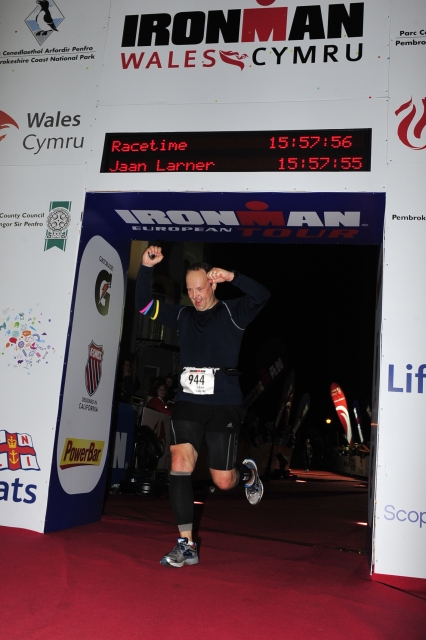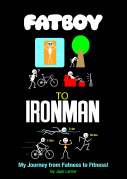I find it hard to keep more than 3 things in my head at a time, so I have distilled this trio of pearls of wisdom (?) on a variety of triathlon topics from the many hours of paddling, pedaling and pounding round triathlons over the last few years:
A journey of thousand miles starts with but a single step….
Somehow, someway you have come to the conclusion that you need to do a triathlon.
Maybe you finally decided to get properly fit…
Maybe you decided to shift a few pounds…
Maybe the lure of neoprene and lycra was simply too much to resist…
Whatever the reason, welcome to the club. It is easy to think that every triathlete was born an Adonis, perfect in physical form and laser-like in their focus. Swathed in high-tech materials and aboard exotic carbon-fibre mounts, they cruise the Triathlon circuits worldwide, placing well and posting new PBs in every leg or event…
Annoying, aren’t they?
But don’t worry, not everyone is like that (and actually the vast majority of those who are, are great guys and girls who recognise that turning up is a greater step than most people take in a lifetime, so you will be welcome).
Most people in triathlon are as normal as anyone else, if a bit fitter and more determined.
And they all started somewhere. Some switched from single sports such as running or swimming to multidiscipline with some great legacy skills and fitness. Others are looking at everything fresh, with legacy love handles and are wondering where on Earth to start….
Tip 1: Take Stock
Sorry to sound like a lawyer (occupational hazard), but look at all of your assets and liabilities (physical, skills-based or attitude-based) and work out what you need to get to the start line. Each one will tell you something about how to train and finish your first triathlon
It might look like this:
Assets
- Bike (bit rusty)
- Can Swim (ish)
- Have running shoes (dusty)
- Love sports drinks (after a big night out)
- Old weight training kit
- Some free cash
- 3 months to the event
Liabilities
- Scared of open water (thank you, Stephen Spielberg)
- Can’t swim more than 25m
- Can’t run more than a mile (or at least couldn’t 4 years ago when I last tried)
- Don’t look good in lycra (Michelin Man)
- Only 3 months to the event
Conclusions
- Get your bike serviced and buy a helmet
- Join a pool and get some lessons if you can
- Pull on the trainers and get out there. Or in there. Running machines aren’t bad and are great for controlling intervals, but not a patch on hitting the road.
- Dust off the weights
- Get reacquainted with that room where you keep the beer and the find out what all the other toys apart from the fridge do.
Tip 2: Plan Accordingly
I looked at triathlon as 5 disciplines (rather than just 3), all of which need to be factored into training. So based on your inventory you can plan as follows:
Swim – Read up on technique and drills (plenty online and some pretty good books too…hint, hint…) or better yet get some lessons and design a plan to build up to the total swim distance. Then when you are fit enough and confident enough, buy/rent a wetsuit and find a local body of water to immerse yourself in, preferably with some likeminded or experienced open water swimmers on hand.
Cycle – Build up some regular rides to develop your bike skills and gradually extend to your final triathlon distance –Always, always, always wear a helmet: not only is it usually an event requirement, but you will almost certainly fall off and while your minor scrapes will heal, your noggin may not. And on Earth we are only issued with the one….
Run – Again plan to build up gradually until you can complete the run distance, but if you are a little on the “Clydesdale” side like me, don’t increase the distances too fast or you’ll knacker something. And run on something soft:
Grass/Sand: Goooood
Tarmac/Concrete:….Baaaaad.
Strength Training – Start slowly and gradually build up according to how you feel and if nothing else I would concentrate on core strength, which keeps your various bits working together properly. If you are in the least bit worried about smacking yourself in the head with weights, probably best to avoid them until you sober up.
With all of these you are better doing shorter, regular training sessions than fewer monster ones.
Nutrition – There are thousands of diets out there, but I have found that the following principle seems to hold:
- More calories in, than out – gain weight
- More calories out, than in – lose weight
The more you follow this and the more flattering the lycra gets. Yeah and the fitness thing, too…
So get in the kitchen and take control of what you eat by planning it – eating crap often happens when you don’t have options ready.
Tip 3: Get Started and Keep Going
You are going to need to stick to your plan, so:
- Concentrate on why you are doing it – big shiny reasons, please.
- Make sure the planned sessions are substantial enough to matter, but still achievable, so you don’t fall short and feel demotivated.
- Factor in rewards – the stick is good (not finishing would suck…) but the carrot is important, too. So make sure you have enough recovery breaks, treats (food, drinks, going out – all three, if you like and I often do) and support – when the going gets tough, the tough think about the gig, meal out, drinks with friends, the lie-in, the party, the new books, mobile phone etc etc – whatever floats your boat.
Summary
Work out what you have;
Work out what you need to do and the time you have to do it in; and,
Work out what is going to keep you going.
Then do it. Easy, right?
And remember you’re awesome, so you’ll be fine.
For more details on my journey from Fatboy to Ironman, please download my ebook:



